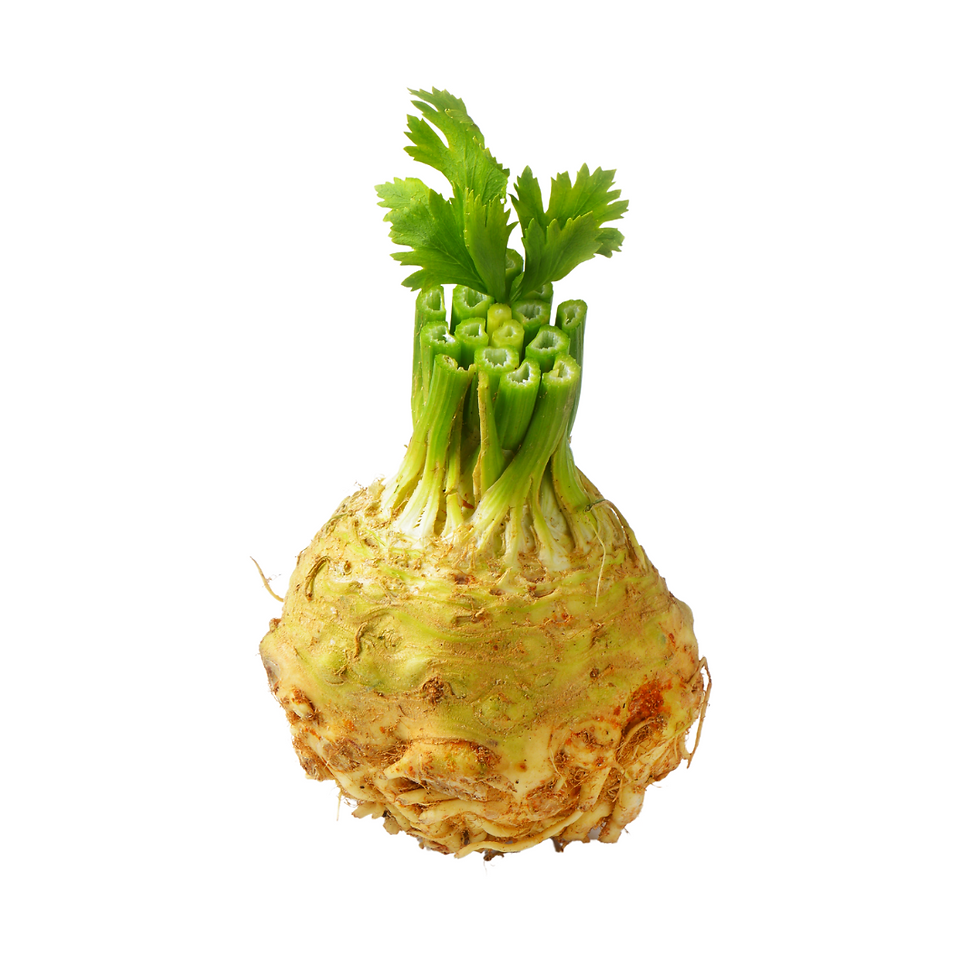Celeriac
This wonky root cousin of celery has a wonderfully savory chicken-soup flavor, tasting like both celery and potato at once. Use it in any way that you’d use a potato to elevate the richness of any cozy winter dish.

Flavor profile
This root really does taste like chicken soup with savory potato elements as well as sweet celery undertones. You can think of it as a super flavorful potato.
Uses
Celeriac is often roasted and blended into a creamy soup, can be shaved thin and enjoyed raw in a celeriac slaw (remoulade), and can pretty much be used to replace potatoes in any dish. For example, you can shred it with potatoes into hash browns, dice it up for a super savory breakfast sauté, or even marinate and roast it like you would a nice cut of meat. Pro tip: If you’re looking to fancify your stuffing at holiday meals, add celeriac!
How to Prepare
A lot of folks hesitate with celeriac simply because they don’t know how to get into it. It's got a lot of root gnarls and can be intimidating, but fear not! Simply hold the celeriac by its stem and use your knife to shave off just enough of the hairy root bits to leave a smooth surface, the rest of the skin does not need to be peeled. Then you can cut it into discs and cube it up from there.
Pairs with
Other root vegetables, garlic, cream, butter, hardy winter greens, fish (served with celeriac slaw), apples, and more!
Storage
Like most root vegetables, celeriac can store for a very long time in your fridge. Store in a plastic bag or airtight container to keep it from drying out.
Other names
Celery root, celeriac (cell-air-ee-ack), knob celery
Nutrients
Celeriac is unique in that it has the benefits of both a root and an herb. It’s less starchy than a potato but still packed with dietary fiber and contains many vitamins and minerals, including vitamin C, vitamin K, and phosphorus. Eaten raw, it’s also a good source of manganese, vitamin B6, and potassium.
History
First mentioned in Homer’s Odyssey in 800 B.C., celeriac is one of the oldest cultivated root crops, originally from the Mediterranean region and Northern Africa. It wasn’t commonly grown throughout Europe until the late 1600’s, at which time Germans were using it in soup stocks and schnitzel. Read more in this NPR Story: The Vegetable World's Ugly Duckling: Celeriac.
Why it's a great crop
Celeriac is a great storage crop that provides rich sustenance all winter long, and because it grows mostly above the soil, it’s less susceptible to pest damage than other root crops. It is a specialty crop in that it takes a particularly long time in the field from seed to harvest, and it also is fairly time-consuming to clean all the mud out of the root gnarls, often needing to be shaved down with a knife in addition to sprayed thoroughly.
.png)
